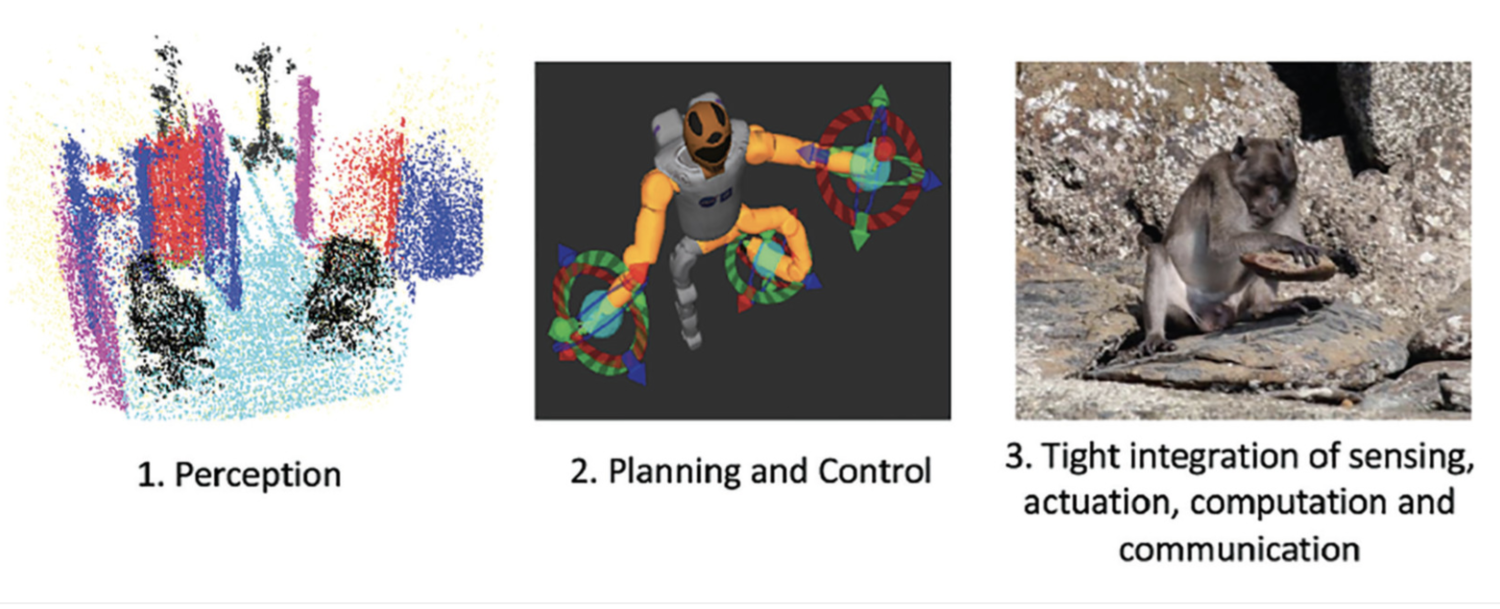Materials that make robots smart

We posit that embodied artificial intelligence is not only a computational but also a materials problem. While the importance of material and structural properties in the control loop are well understood, materials can take an active role during control by the tight integration of sensors, actuators, computation, and communication. We envision such materials to have abstract functionality, therefore making the construction of intelligent robots more straightforward and robust. For example, robots could be made of bones that measure load, muscles that move, skin that provides the robot with information about the kind and location of tactile sensations ranging from pressure to texture and damage, eyes that extract high-level information, and brain material that provides computation in a scalable manner. Such materials will not resemble any existing engineered materials, but rather the heterogeneous components from which their natural counterparts are made. We describe the state-of-the-art in so-called “robotic materials,” their opportunities for revolutionizing applications ranging from manipulation to autonomous driving by describing two recent robotic materials, an intelligent skin and a smart tire in more depth, and conclude with open challenges that the robotics community needs to address in collaboration with allies, such as wireless sensor network researchers and polymer scientists.
Reference
Hughes, D., Heckman, C. and Correll, N., 2019. Materials that make robots smart. The International Journal of Robotics Research, 38(12-13), pp.1338-1351.

